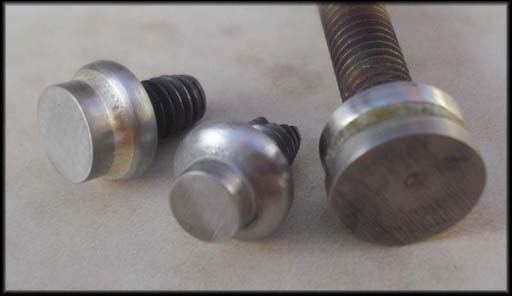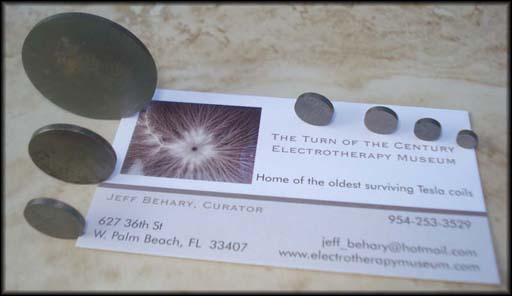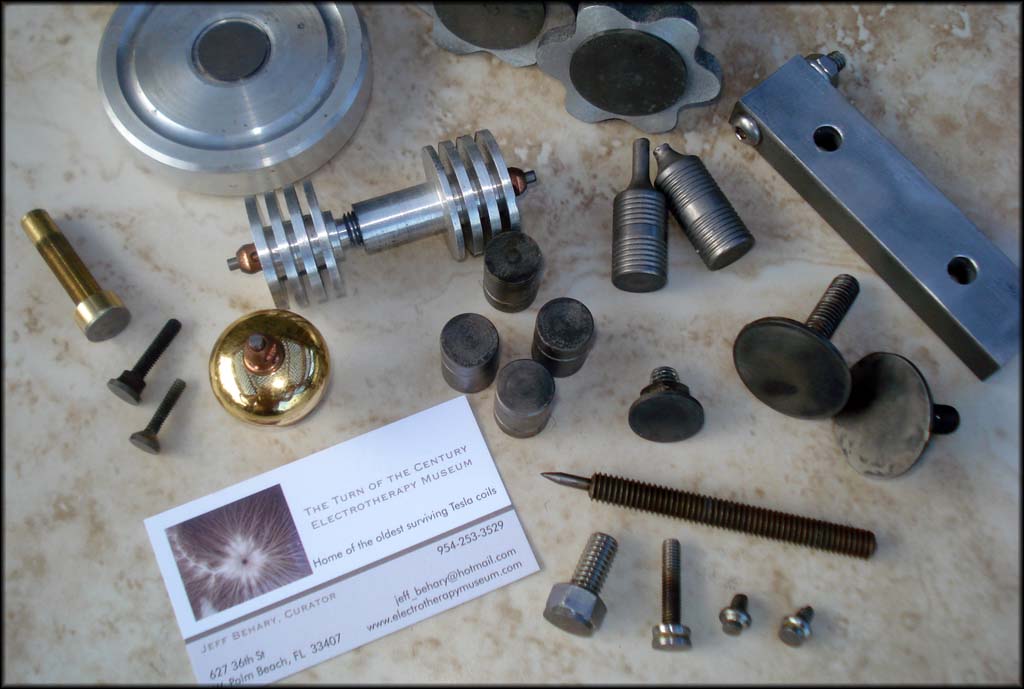Hello All,
I am trying to resurrect a dead business of making Tungsten Contacts. These were standard for Tesla experiments, and we have spark gaps more than 100 years old that use them and still function beautifully.


Unfortunately, there are no manufacturers here in the USA that actually produce the contacts in small quantities for hobbiests. I am attempting to change that.

For contacts alone, priced in pairs (2 each), brazed to Stainless Steel machine screws, I have the following prices so far.
.1875" diameter - $18.75 / pr
.2500" diameter - $25.00 / pr
.3125" diameter - $31.25 / pr
.5000" diameter - $50.00 / pr
.7500" diameter - $75.00 / pr
1.250" diameter - $125.00 / pr
The contact faces are pure tungsten 1/16" thick. Many early gaps were
only half as thick. They also work well for induction coils and interrupters.
Quantities will be limited.
Please email jeff_behary@hotmail.com for more details.
Custom machined heat sinks and complete spark gaps are also available.
Jeff Behary
I am trying to resurrect a dead business of making Tungsten Contacts. These were standard for Tesla experiments, and we have spark gaps more than 100 years old that use them and still function beautifully.
Unfortunately, there are no manufacturers here in the USA that actually produce the contacts in small quantities for hobbiests. I am attempting to change that.
For contacts alone, priced in pairs (2 each), brazed to Stainless Steel machine screws, I have the following prices so far.
.1875" diameter - $18.75 / pr
.2500" diameter - $25.00 / pr
.3125" diameter - $31.25 / pr
.5000" diameter - $50.00 / pr
.7500" diameter - $75.00 / pr
1.250" diameter - $125.00 / pr
The contact faces are pure tungsten 1/16" thick. Many early gaps were
only half as thick. They also work well for induction coils and interrupters.
Quantities will be limited.
Please email jeff_behary@hotmail.com for more details.
Custom machined heat sinks and complete spark gaps are also available.
Jeff Behary


Comment